Omnichannel Personalization 2025: Strategy, Tools, Examples
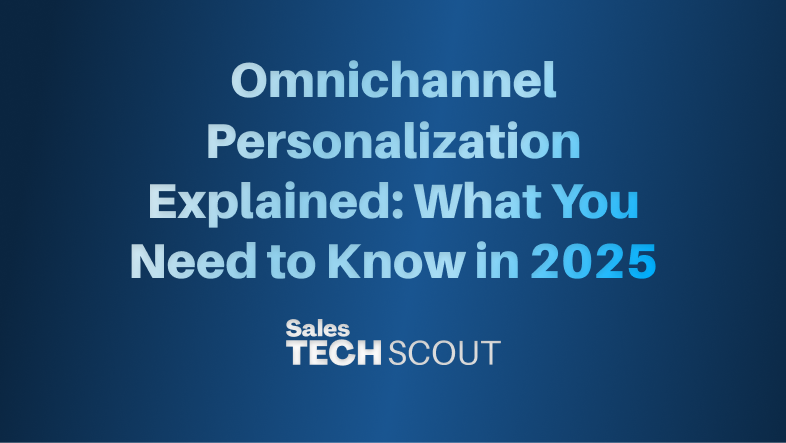

Introduction
In today's competitive B2B landscape, delivering generic messages across multiple channels simply doesn't cut it anymore.
Modern buyers expect personalized experiences that feel relevant, timely, and valuable regardless of how they interact with your brand.
Omnichannel personalization has emerged as the solution that bridges this gap, enabling businesses to create cohesive, individualized experiences across every touchpoint.
This comprehensive guide will walk you through everything you need to know about implementing omnichannel personalization in 2025.
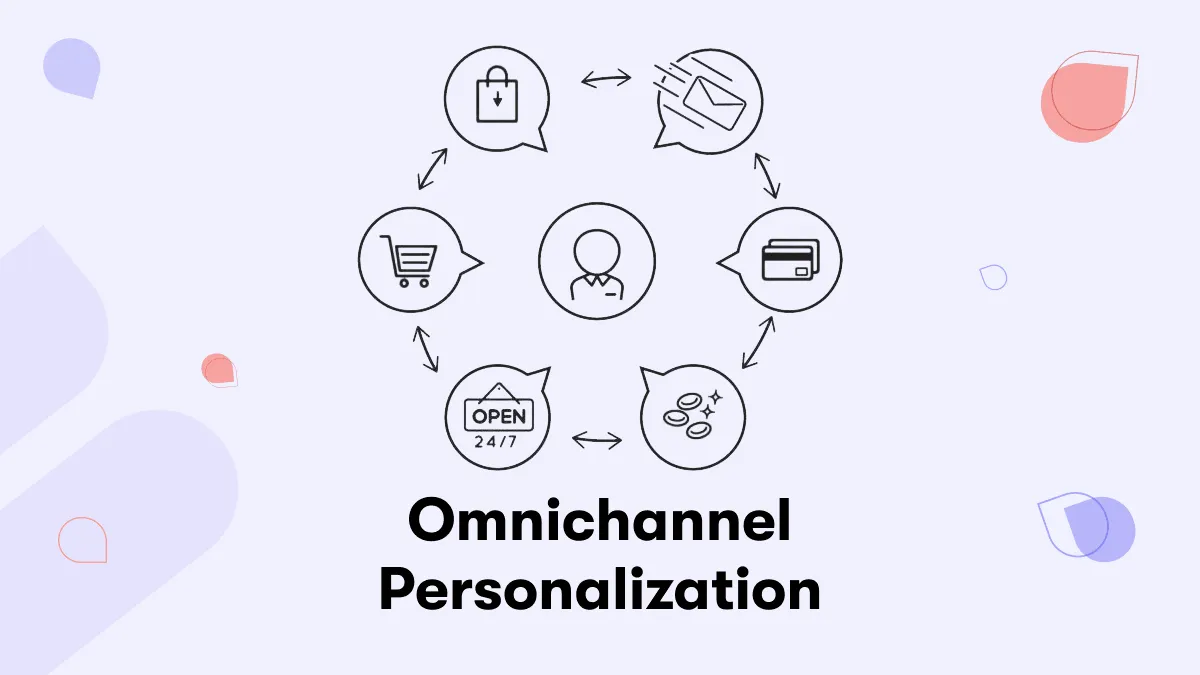
What is Omnichannel Personalization?
Omnichannel personalization is the practice of delivering consistent, tailored experiences to customers across all channels and touchpoints throughout their journey.
Unlike traditional marketing approaches that treat each channel in isolation, omnichannel personalization creates a unified view of each customer and adapts messaging, content, and interactions based on their preferences, behavior, and context.
At its core, omnichannel personalization combines three critical elements:
Data Integration: Collecting and unifying customer data from all touchpoints including website visits, email interactions, social media engagement, sales calls, and support tickets.
Real-Time Processing: Analyzing customer behavior and preferences in real-time to deliver relevant experiences at the moment they matter most.
Cross-Channel Coordination: Ensuring that personalized experiences remain consistent and complementary across all channels, from email and social media to website content and sales outreach.

Why Omnichannel Personalization Matters in B2B
B2B buyers today interact with brands across an average of 6-8 different channels before making a purchase decision.
Without omnichannel personalization, businesses risk creating disjointed experiences that frustrate prospects and reduce conversion rates.
Research shows that companies implementing effective omnichannel personalization strategies see:
- 15-20% increase in conversion rates
- 25-30% improvement in customer lifetime value
- 35-40% reduction in customer acquisition costs
- 20-25% boost in customer satisfaction scores
Key Components of a Great Strategy
Building an effective omnichannel personalization strategy requires careful planning and execution across several key components.
Customer Data Platform (CDP)
The foundation of any omnichannel personalization strategy is a robust Customer Data Platform that can collect, unify, and activate customer data across all touchpoints.
Your CDP should integrate data from:
- Website analytics and behavior tracking
- Email marketing platforms
- CRM systems
- Social media interactions
- Sales engagement tools
- Customer support platforms
- Event and webinar attendance
- Content consumption patterns
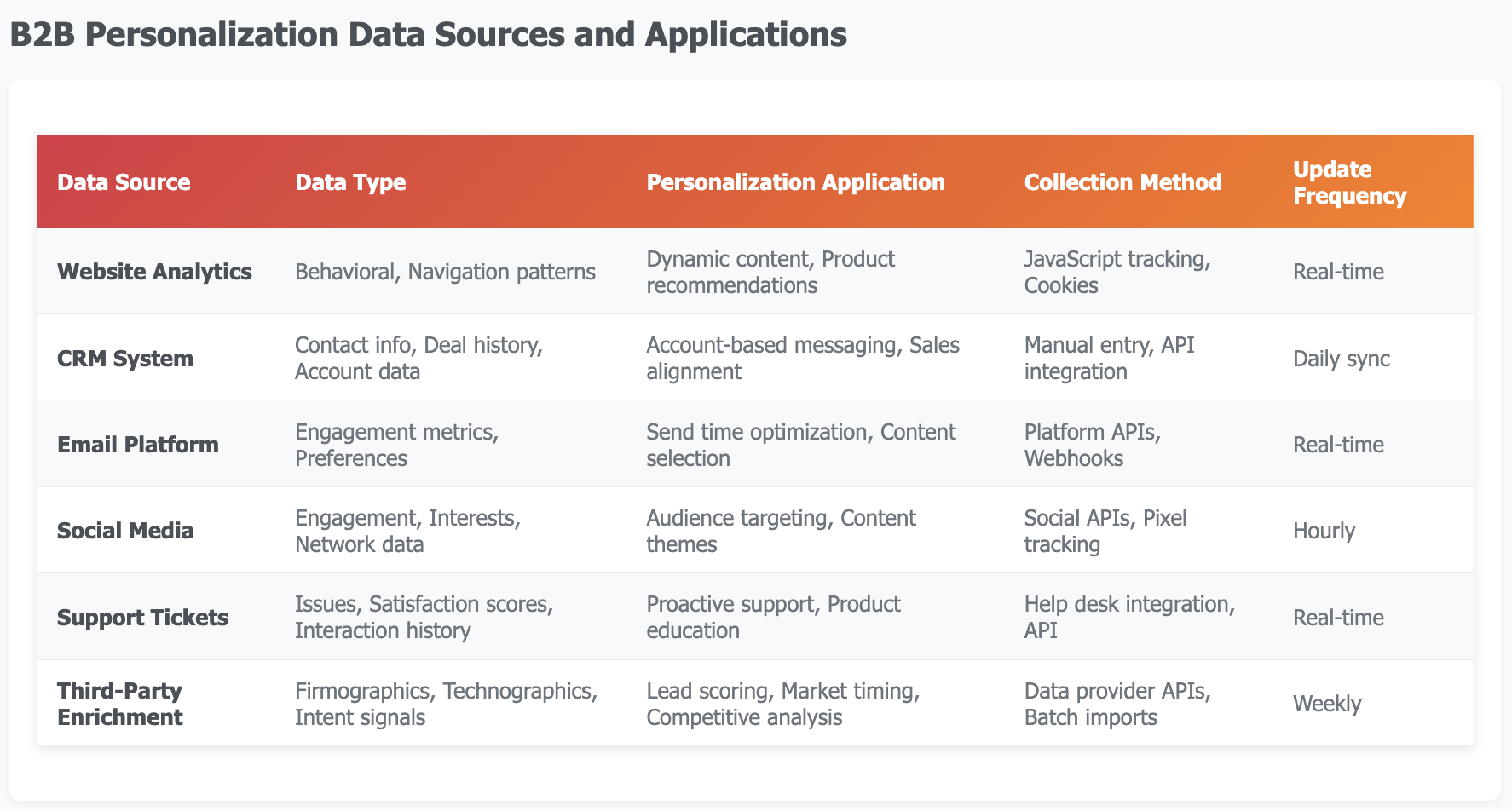
Segmentation and Targeting
Effective omnichannel personalization relies on sophisticated segmentation that goes beyond basic demographic data. Modern segmentation strategies should incorporate:
Behavioral Segmentation: Grouping customers based on their actions, engagement patterns, and buying behavior.
Intent-Based Segmentation: Identifying prospects based on their demonstrated interest in specific products or solutions.
Journey Stage Segmentation: Tailoring experiences based on where customers are in their buying journey.
Firmographic Segmentation: Considering company size, industry, technology stack, and organizational structure for B2B contexts.
Content Personalization Engine
Your content personalization engine should be capable of dynamically adapting messaging, offers, and content based on individual customer profiles.
This includes:
- Dynamic website content that changes based on visitor behavior
- Personalized email campaigns with relevant product recommendations
- Customized landing pages for different audience segments
- Tailored social media content and advertising
- Individualized sales outreach messages
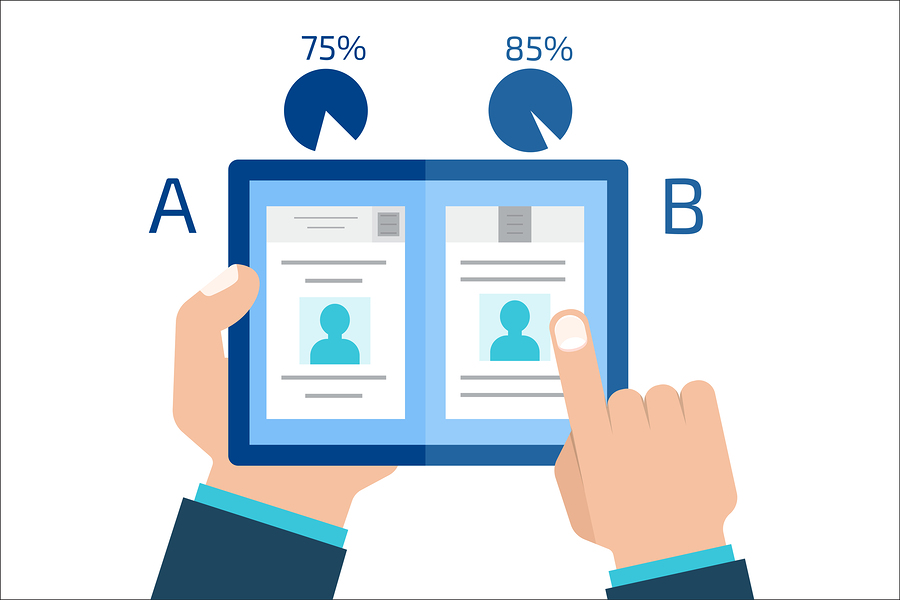
Channel Orchestration
Successful omnichannel personalization requires coordinated messaging across all channels.
This means ensuring that:
- Email campaigns complement website experiences
- Social media content aligns with current sales conversations
- Retargeting ads reflect recent product interests
- Sales outreach references previous marketing touchpoints
- Customer support has context from all previous interactions
Real-World Examples
Let's examine how leading B2B companies are successfully implementing omnichannel personalization strategies.
Example 1: Software Company's Account-Based Approach
A leading CRM software company implemented omnichannel personalization for their enterprise accounts:
Website Personalization: When decision-makers from target accounts visit the website, they see industry-specific case studies, relevant integration partners, and customized pricing information.
Email Sequences: Automated email campaigns reference the visitor's company name, industry challenges, and specific features they viewed on the website.
Sales Outreach: Sales representatives receive real-time alerts when prospects engage with content, enabling timely and relevant follow-up conversations.
Social Media: LinkedIn ads display personalized messaging based on the prospect's role and company size.
Results: This coordinated approach resulted in a 45% increase in qualified leads and a 30% reduction in sales cycle length.
Example 2: Professional Services Firm's Content Strategy
A management consulting firm leveraged omnichannel personalization to nurture long-term relationships:
Content Hub: Created a personalized content portal where visitors see recommendations based on their industry, role, and previous content consumption.
Webinar Series: Automated invitations to relevant webinars based on demonstrated interests and engagement history.
Newsletter Personalization: Weekly newsletters feature content sections tailored to individual preferences and reading behavior.
Event Marketing: Conference follow-up campaigns reference specific sessions attended and speakers met.
Results: The firm saw a 60% increase in content engagement and a 25% improvement in lead quality scores.
Example 3: Technology Vendor's Multi-Touch Campaign
A cybersecurity vendor implemented omnichannel personalization for product launch campaigns:
Awareness Phase: Targeted display ads highlighting relevant security threats based on the prospect's industry.
Consideration Phase: Personalized demo videos sent via email showcasing features most relevant to the prospect's use case.
Decision Phase: Sales teams equipped with detailed engagement scores and content consumption history for informed conversations.
Post-Purchase: Onboarding sequences tailored to the customer's implementation timeline and technical requirements.
Results: The campaign achieved a 40% higher conversion rate compared to previous non-personalized launches.
Best Tools in 2025 (comparison)
The omnichannel personalization tools landscape has evolved significantly, with several platforms emerging as leaders for B2B companies.
Enterprise-Level Platforms
Adobe Experience Platform leads the enterprise market with comprehensive capabilities for large organizations. It offers robust data management, real-time personalization, and extensive integration options. Pricing typically starts at $100,000+ annually, making it suitable for large enterprises with substantial marketing budgets.
Salesforce Marketing Cloud provides strong integration with CRM data and sales processes. Its Einstein AI capabilities enable sophisticated personalization across email, web, and advertising channels. Pricing begins around $1,250 per month but can scale significantly with additional features.
HubSpot Marketing Hub offers a more accessible entry point for mid-market companies. While not as feature-rich as enterprise platforms, it provides solid personalization capabilities integrated with CRM and sales tools. Pricing starts at $800 per month for professional features.
Specialized Personalization Tools
Optimizely focuses specifically on experimentation and personalization, offering strong A/B testing capabilities alongside content personalization. It's particularly valuable for companies prioritizing data-driven optimization.
Dynamic Yield specializes in real-time personalization across web, email, and mobile channels. Its machine learning algorithms excel at predicting customer preferences and optimizing experiences automatically.
Evergage (now part of Salesforce) provides real-time personalization with strong behavioral tracking capabilities. It's particularly effective for B2B companies with complex, multi-touch sales cycles.
Emerging and Niche Solutions
Mutiny has gained traction among B2B companies for its focus on website personalization without requiring extensive technical implementation. It's designed specifically for marketing teams to create personalized experiences quickly.
Segment serves primarily as a customer data platform but includes basic personalization capabilities. It's excellent for companies prioritizing data unification before implementing more advanced personalization features.
Clay offers AI-powered personalization specifically for sales outreach, helping sales teams create personalized messages at scale based on prospect research and company data.
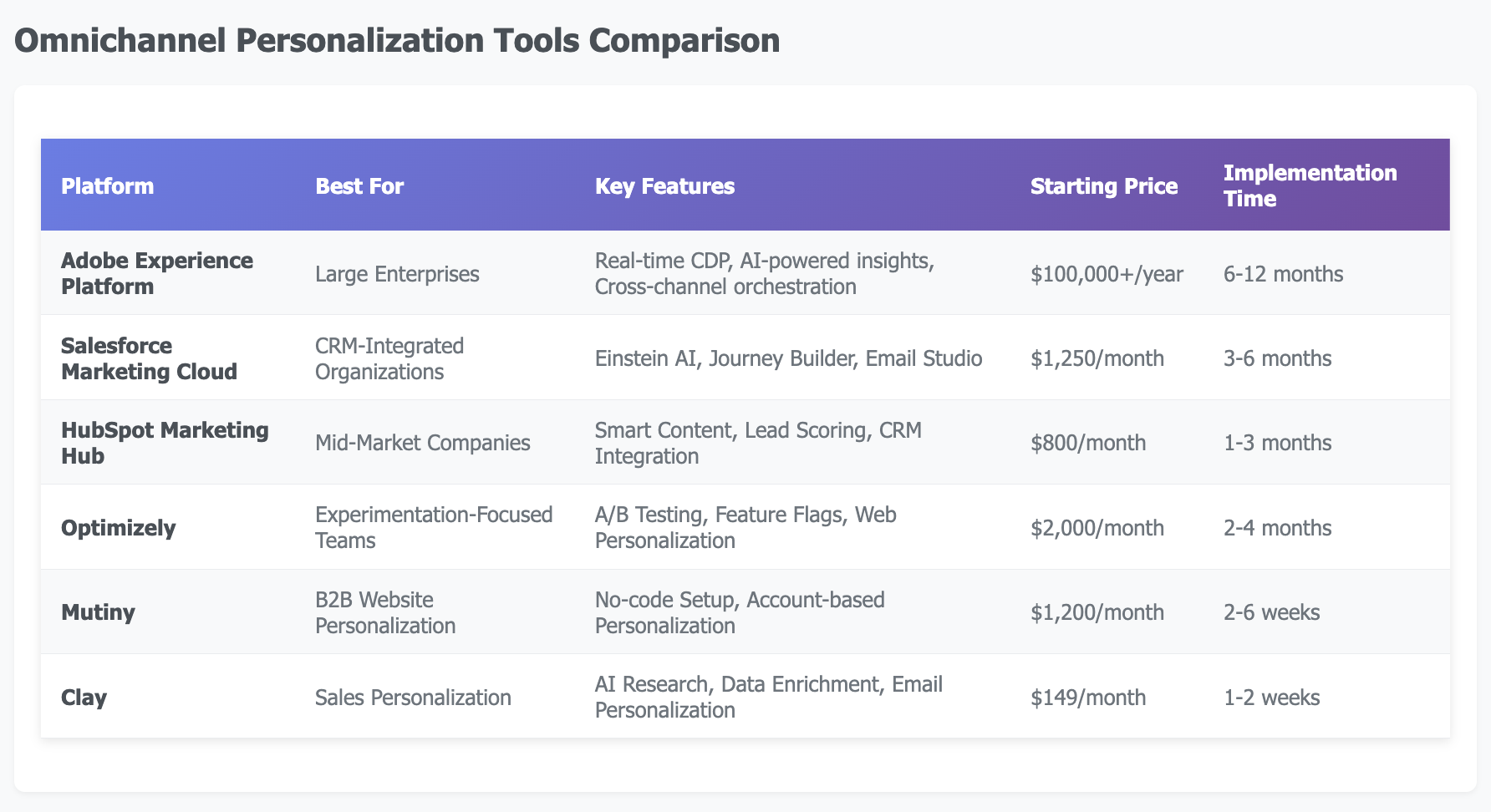
How to Apply It Step by Step
Implementing omnichannel personalization requires a systematic approach that builds capabilities over time.
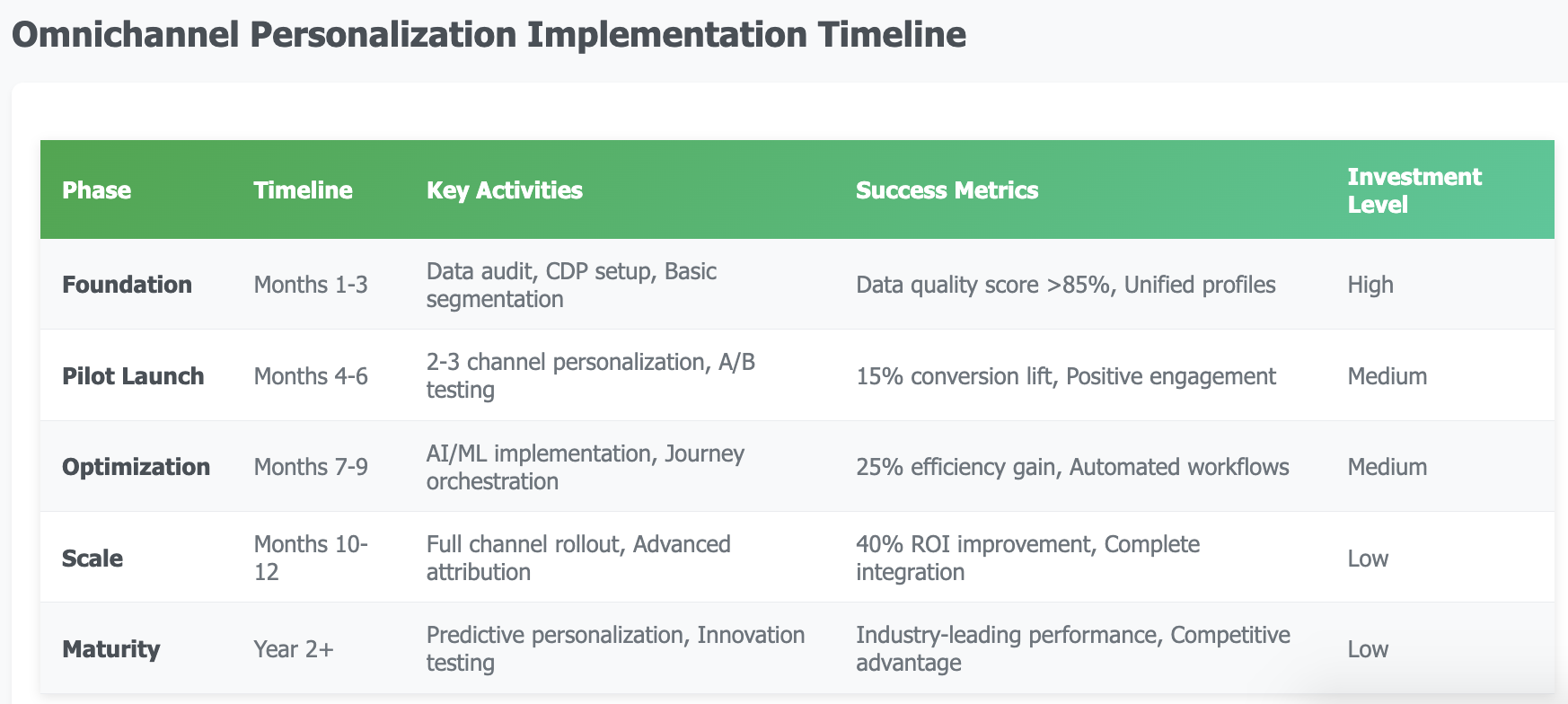
Phase 1: Foundation Building (Months 1-3)
Step 1: Data Audit and Integration
Begin by cataloging all customer data sources and identifying integration requirements. This includes:
- CRM customer records
- Website analytics data
- Email marketing metrics
- Sales engagement history
- Customer support interactions
- Social media engagement data
Step 2: Technology Stack Assessment
Evaluate your current marketing technology stack and identify gaps. Consider:
- Customer Data Platform capabilities
- Marketing automation features
- Analytics and reporting tools
- Integration requirements between systems
Step 3: Basic Segmentation Setup
Start with fundamental segmentation based on:
- Company size and industry
- Role and seniority level
- Engagement level and recency
- Product interest and buying stage

Phase 2: Pilot Implementation (Months 4-6)
Step 4: Channel Selection
Choose 2-3 primary channels for initial personalization efforts:
- Email marketing (easiest to implement)
- Website content (high impact potential)
- Sales outreach (direct revenue impact)
Step 5: Content Development
Create personalized content variations for each segment:
- Industry-specific case studies
- Role-based email templates
- Personalized landing pages
- Tailored sales sequences
Step 6: Campaign Launch and Testing
Launch pilot campaigns with robust tracking:
- A/B test personalized vs. generic versions
- Monitor engagement metrics across channels
- Track conversion rates and pipeline impact
- Gather feedback from sales teams
Phase 3: Optimization and Expansion (Months 7-12)
Step 7: Performance Analysis
Analyze pilot results to identify:
- Most effective personalization tactics
- Highest-performing channel combinations
- Optimal messaging for each segment
- Technical improvements needed
Step 8: Advanced Features Implementation
Introduce more sophisticated capabilities:
- Real-time behavioral triggers
- Predictive content recommendations
- Cross-channel journey orchestration
- Advanced attribution modeling
Step 9: Full-Scale Rollout
Expand personalization across all channels:
- Social media advertising
- Event marketing
- Customer success communications
- Partner channel enablement

Omnichannel vs Multichannel vs Crosschannel
Understanding the distinctions between these three approaches is crucial for developing an effective strategy.
Multichannel Marketing
Multichannel marketing involves using multiple channels to reach customers, but each channel operates independently.
Characteristics include:
- Separate campaigns for each channel
- Inconsistent messaging across touchpoints
- Limited data sharing between channels
- Channel-specific metrics and optimization
While better than single-channel approaches, multichannel marketing often creates fragmented customer experiences and missed opportunities for synergy.
Crosschannel Marketing
Crosschannel marketing creates some integration between channels, allowing for basic coordination.
Features include:
- Shared customer data between some channels
- Coordinated timing of campaigns
- Basic message consistency
- Limited personalization based on cross-channel behavior
This approach represents an improvement over multichannel but still lacks the sophisticated integration needed for true personalization.
Omnichannel Personalization
Omnichannel personalization creates fully integrated, personalized experiences across all touchpoints. Key characteristics:
- Unified customer view across all channels
- Real-time personalization based on complete behavioral history
- Seamless handoffs between channels
- Coordinated messaging that builds on previous interactions
- Comprehensive attribution and measurement

Choosing the Right Approach
Most B2B companies should aim for omnichannel personalization, but the implementation timeline depends on:
Current Technology Maturity: Companies with limited marketing technology may need to start with multichannel approaches and evolve over time.
Data Quality and Integration: Organizations with fragmented data sources should prioritize integration before implementing advanced personalization.
Resource Availability: Omnichannel personalization requires significant investment in technology, processes, and people.
Customer Complexity: B2B companies with complex, multi-stakeholder buying processes benefit most from omnichannel approaches.
Final Takeaways + Trends
As we move through 2025, several key trends are shaping the future of omnichannel personalization.
Artificial Intelligence and Machine Learning
AI and ML capabilities are becoming increasingly sophisticated, enabling:
- Predictive personalization that anticipates customer needs
- Automated content generation for personalized messages
- Real-time optimization of customer experiences
- Advanced attribution modeling across complex journeys
Privacy and Data Governance
Growing privacy regulations require businesses to:
- Implement robust consent management systems
- Ensure transparent data collection practices
- Provide customers control over their personalization preferences
- Balance personalization with privacy protection
Account-Based Personalization
B2B companies are increasingly focusing on account-level personalization that considers:
- Multiple stakeholders within target accounts
- Complex organizational structures and decision-making processes
- Long-term relationship building vs. transactional interactions
- Integration with sales processes and account planning
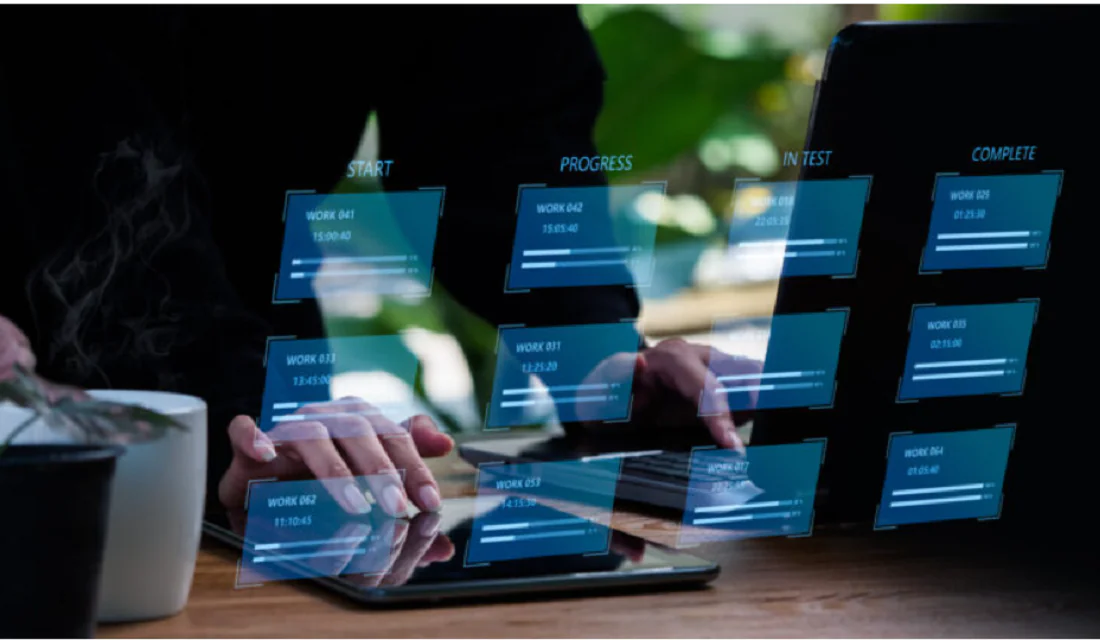
Measurement and Attribution
Advanced measurement capabilities are enabling:
- Multi-touch attribution across complex B2B journeys
- Real-time ROI measurement for personalization efforts
- Predictive modeling for customer lifetime value
- Integration of online and offline touchpoints
Key Success Factors for 2025
Based on current trends and best practices, successful omnichannel personalization strategies should focus on:
Customer-Centricity: Put customer needs and preferences at the center of all personalization efforts, rather than focusing solely on business objectives.
Data Quality: Invest in data governance and quality management to ensure personalization efforts are based on accurate, complete information.
Cross-Functional Collaboration: Break down silos between marketing, sales, and customer success teams to create truly integrated experiences.
Continuous Testing: Implement robust testing and optimization processes to continuously improve personalization effectiveness.
Scalable Technology: Choose technology platforms that can grow with your business and adapt to changing requirements.
Getting Started
For B2B companies beginning their omnichannel personalization journey:
- Start Small: Begin with one or two channels and expand gradually
- Focus on Data: Prioritize data integration and quality before implementing advanced features
- Measure Everything: Establish baseline metrics and track improvements over time
- Invest in Training: Ensure your team has the skills needed to manage personalization technology
- Plan for the Long Term: Omnichannel personalization is a multi-year journey, not a quick fix
The companies that successfully implement omnichannel personalization in 2025 will be those that view it as a strategic imperative rather than a tactical marketing technique.
By creating truly personalized, integrated experiences across all touchpoints, B2B organizations can build stronger relationships, accelerate sales cycles, and drive sustainable growth in an increasingly competitive marketplace.
Subscribe to Our Newsletter
To Never Miss a Thing



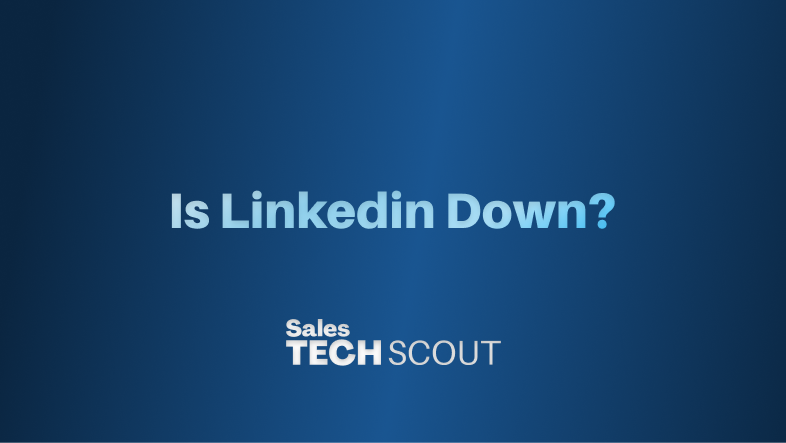


.avif)


